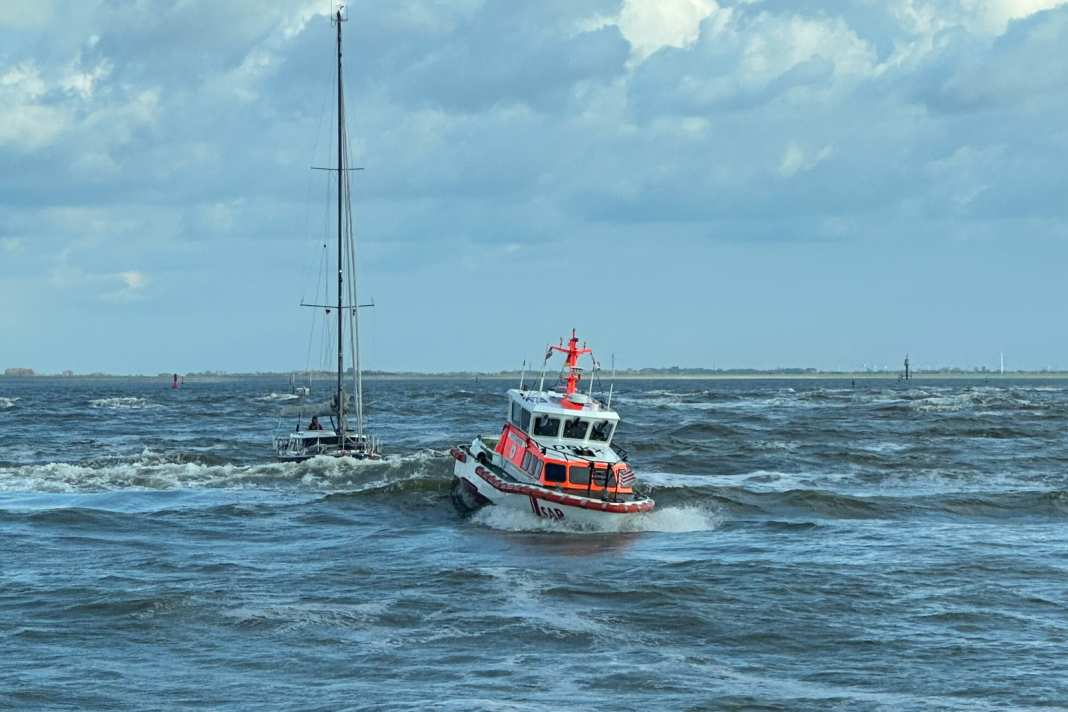Distress at sea: Sailor rescued from mortal danger in the Seegatt - outdated maps to blame?
Max Gasser
· 23.04.2024




The sea rescuers of the German Maritime Search and Rescue Service (DGzRS) had to respond to a critical accident on Saturday. Four sailors from Great Britain had run aground with their sailing yacht in the Seegatt between the East Frisian islands of Norderney and Juist. The surf in the Schluchter fairway damaged the boat to such an extent that it took on water.
Under difficult conditions, the two rescue boats "Eugen" (Norderney station) and "Otto Diersch" (Norddeich station) managed to establish a line connection and rescue the sailors and their yacht from their life-threatening situation. The crew remained unharmed. The badly damaged sailing boat was towed into Norderney harbour and immediately craned out.
Turned too early? - Outdated nautical charts possible cause of accident
The incident is being discussed on social media, with some people talking about outdated nautical charts as the cause of the distress at sea. This has not been confirmed so far, but due to the conditions in sea galleys, even up-to-date charts are usually not sufficient for safe navigation.
The current channels are considered a very challenging area for sailors, and it is not uncommon for disastrous accidents to occur. This is because shoals can also move into the fairway after storms. The official nautical charts indicate the areas as "highly changeable". The DGzRS warns against the Schluchter fairway in particular. This should "only be navigated by very experienced local sailors who are very familiar with the special sea conditions of the Norderneyer Seegatt."
The Federal Bureau of Maritime Casualty Investigation (BSU) has issued the following tips for travelling on seagoing vessels:
- Those unfamiliar with the area should only navigate Seegatten after obtaining local advice.
- Every sea gate is different. Details can always be found in the latest nautical publications.
- Sea lanes should be travelled along the buoyage with the tidal current.
- The return must be planned before the seaward passage of a gate.
- You should not navigate in a sea inlet when it is dark or visibility is poor.
- Each sea channel [meaning the buoyed fairways] should be navigable in moderate, onshore winds of 3 to 4 Bft and the corresponding swell with incoming water and more than half tide (unless there is a high swell/observe all other instructions!)
- Always avoid the constellation of current against wind! From 5 Bft and more, it is dangerous due to the wind sea.
- In strong onshore winds (wind force 6), not all of the East Frisian, West Frisian and North Frisian islands are navigable. At the very least, entry is risky.
- The barre should be travelled close to high water (+/- 2 hours).
- When approaching seaward, the approach buoy should always be approached first (advantages: sufficient sea room up to the barrels; localisation of the fairway buoys, assessment of the sea state and the current - turn back if necessary).
- The fairway marked by the buoys should always be observed. After strong wind events, information on the buoyage should be obtained in advance.
- A sailing boat should only sail into a sea channel under sail if there is sufficient space to leeward due to the wind direction to follow the buoyed fairway, taking the current into account.
- When sailing downwind, if possible only sail under headsail to avoid the risk of patent jibes and to reduce the yawing to windward (supplement by an inspector).
- An engine - if available - should always be ready to start or running in order to keep the boat on course or manoeuvre it out of a dangerous situation.
Legerwall: Another distress at sea keeps DGzRS on its toes
There were also groundings in the Bay of Lübeck last week. In strong onshore winds of up to 7 Beaufort, the engine of a 9.45 metre sailing yacht broke down on the approach to Niendorf harbour.
The two-man crew could no longer keep the unmanoeuvrable boat away from land. Despite the anchor deployed on the instructions of the sea rescuers, it drifted towards the beach and ran aground a few metres off the coast. Between the entrance to Niendorf harbour and the Seeschlösschenbrücke bridge, it became a plaything of the surf. With waves one to two metres high, the shipwrecked vessel repeatedly grounded hard.
A rubber dinghy from the Niendorf volunteer fire brigade, which had come to the rescue, became the decisive rescue tool. It brought the towline and a rescue boat to the distressed couple in the shallow waters just off the coast. The lifeboat towed the distressed couple out of the surf zone. However, the rudder could no longer be operated and was lying hard to port instead. A daughter boat therefore secured the trailer as a stern tug. In Niendorf harbour, the crew of an ambulance and the police took care of the rescued people.

